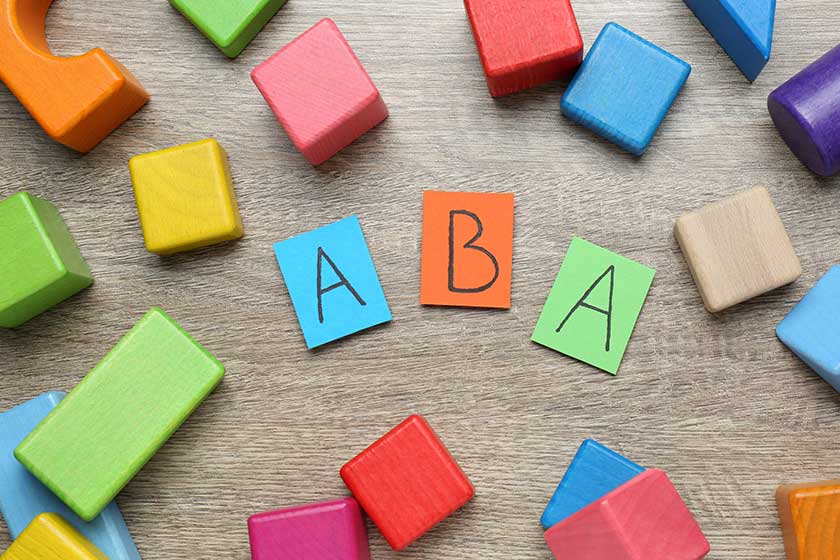
The Science Behind ABA Therapy at an Autism Learning Center
For families of children with autism, understanding the treatment options available is crucial to making an informed decision. ABA therapy (Applied Behavior Analysis) is one of the most scientifically validated approaches for supporting children with autism spectrum disorder (ASD). But what makes ABA therapy so effective? What is the science behind ABA therapy that enables it to produce lasting changes in behavior, communication, and social skills?
In this post, we’ll break down the science behind ABA therapy, explaining the core principles and techniques that guide this approach. We’ll also look at how ABA therapy works within an Autism Learning Center, ensuring children receive the most effective care in a structured and supportive environment.
1. What is ABA Therapy?
ABA therapy is a behavioral treatment based on the principles of behaviorism—a branch of psychology that studies observable behaviors and how they are influenced by the environment. Developed in the 1960s, ABA therapy focuses on using positive reinforcement and structured teaching methods to encourage desired behaviors and reduce undesirable ones.
At its core, ABA therapy seeks to:
- Increase positive behaviors: Skills such as communication, social interaction, and daily living tasks.
- Decrease challenging behaviors: Behaviors like aggression, tantrums, or self-injury that may interfere with learning or socialization.
The science behind ABA therapy is rooted in decades of research and evidence, demonstrating its effectiveness for children with autism.
2. The Core Principles of ABA Therapy
The science behind ABA therapy is grounded in several key principles from behaviorism, most notably operant conditioning. These principles are used to shape behavior in a consistent, measurable way, ensuring that interventions are both effective and ethical.
Operant Conditioning: The Foundation
Operant conditioning, developed by B.F. Skinner, is the idea that behavior is influenced by its consequences. Simply put, behaviors followed by positive outcomes are more likely to be repeated, while behaviors followed by negative consequences tend to decrease. This principle is the foundation of ABA therapy.
In ABA, therapists use reinforcement to strengthen desired behaviors and, conversely, may use strategies like extinction (withholding reinforcement) or punishment to reduce challenging behaviors.
Reinforcement: The Power of Reward
Reinforcement is a central technique in ABA therapy. Positive reinforcement involves giving a reward (like praise, a preferred toy, or a treat) when a child exhibits a desired behavior. The idea is to encourage the child to repeat that behavior.
- Continuous Reinforcement: Reinforcing a behavior every time it occurs, which is effective for teaching new skills.
- Intermittent Reinforcement: Reinforcing a behavior occasionally, which strengthens the behavior in the long term and makes it more resistant to extinction.
Reinforcement is tailored to each child’s preferences, ensuring that the rewards are meaningful and motivating.
Antecedent-Behavior-Consequence (ABC) Model
A fundamental tool in ABA therapy is the ABC model, which looks at the relationship between events and behaviors. It is used to understand and change behavior by examining the sequence of what happens before (antecedent), during (behavior), and after (consequence) a behavior.
- Antecedent: What happens right before the behavior (e.g., a demand, change in routine, or social interaction).
- Behavior: The specific action or response by the child (e.g., asking for help, throwing a toy, etc.).
- Consequence: What happens immediately after the behavior (e.g., praise, a time-out, a reward).
Understanding this sequence helps therapists identify what triggers challenging behaviors and how to alter consequences to reinforce positive behaviors instead.
3. Key Techniques Used in ABA Therapy
ABA therapy is not a one-size-fits-all approach; it uses a variety of techniques based on the child’s unique needs. Here are some of the most common methods used to apply the science behind ABA therapy in an Autism Learning Center:
Discrete Trial Training (DTT)
DTT is a structured teaching technique that involves breaking down skills into small, manageable steps. Each step is taught using clear instructions, prompts, and rewards. DTT is highly effective for teaching a range of skills, from basic communication to complex tasks.
The process involves:
- Instruction: The therapist gives a clear, concise direction.
- Prompt: The therapist may guide the child through the task if needed.
- Reinforcement: Positive reinforcement is provided when the child successfully completes the task.
Natural Environment Teaching (NET)
In contrast to DTT, NET focuses on teaching children in natural settings, such as during play or daily routines. This method emphasizes learning in real-life situations and encourages generalization, meaning that children can apply learned skills outside of structured therapy sessions.
NET capitalizes on the child’s natural interests and motivations to teach new behaviors and reinforce old ones.
Verbal Behavior Therapy (VBT)
VBT focuses specifically on teaching communication skills. By breaking down language into smaller, functional components (e.g., requesting, labeling, and making comments), VBT enables children with autism to use language to communicate their needs, feelings, and desires.
This method uses mand training (teaching children to request things), tact training (teaching labeling), and intraverbal training (teaching conversation skills).
4. The Role of an Autism Learning Center in ABA Therapy
An Autism Learning Center provides an ideal environment for implementing ABA therapy because it is structured and tailored to the needs of children with autism. Here’s how an Autism Learning Center maximizes the science behind ABA therapy:
Individualized Assessment
At an Autism Learning Center, every child undergoes an in-depth assessment to determine their specific strengths and challenges. This allows therapists to design individualized therapy programs that address each child’s unique needs. The center also continually evaluates progress, adjusting the approach as needed to ensure optimal outcomes.
Small Group and One-on-One Sessions
ABA therapy at an Autism Learning Center may involve both one-on-one sessions and small group activities, allowing for more personalized attention and social learning opportunities. The small group setting also provides a chance for children to practice their social skills with peers, which is an essential component of development.
Expert Therapists and Consistency
Therapists at Autism Learning Centers are often highly trained and experienced in implementing ABA techniques. Their expertise, combined with the consistency of therapy, ensures that children are receiving the best possible care. ABA therapy works best when it is delivered consistently over time, and an Autism Learning Center provides a stable and structured environment where progress is continuously monitored.
5. Evidence Supporting the Science Behind ABA Therapy
The science behind ABA therapy is well-supported by decades of research. Numerous studies have demonstrated that ABA therapy is effective in improving a wide range of skills for children with autism, including communication, socialization, and academic performance.
For instance, studies have shown that children who receive early and intensive ABA therapy often show significant improvements in behavior and cognitive skills. Research also supports the long-term benefits of ABA, with children continuing to show progress even after therapy has ended.
6. Conclusion: Why ABA Therapy Works
The science behind ABA therapy explains why this treatment is so effective for children with autism. ABA therapy is based on solid principles from behaviorism, uses data-driven methods, and is highly adaptable to each child’s needs. When provided in a supportive environment like an Autism Learning Center, it can help children develop essential skills, reduce challenging behaviors, and improve their overall quality of life.
If you’re considering ABA therapy for your child, an Autism Learning Center like Prism Learning Center can provide a structured, expert-guided approach that leverages the best practices in behavior science. By understanding the science behind ABA therapy, you can feel confident in the decision to support your child’s growth and development.
Interested in learning more about how ABA therapy can help your child? Contact Prism Learning Center today to schedule a consultation and get started on your child’s journey toward success.
